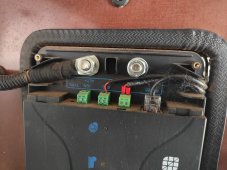caz
New Member
Advice with adding solar panels and 240v to charge lithium batteries on renogy dc-dc system


Unwatch
•••
C



I also have an Anderson plug coming off the back of the ute, how can I tell if I can attach a solar panel via Anderson plug to that? Alsof I buy a 240v battery charger what amperage would I need? And any recommendations on brand etc. I have a few more questions regarding solar and my set up but would be great to get some comments on these initial queries cheers and thanks

- Thread startercaz
- Start dateToday at 9:20 AM

Unwatch
•••
C
caz
New Member
Hi guys, I have just recently purchased a ute with a dc-dc system. Unfortunately the owner could not give me much information on the set up. I am trying to work out alternative ways to charge my batteries while not driving or only driving short distances as I do not have solar yet. I'm running two lithium batteries in parallel (260ah) through a renogy 30ah dc-dc which I am pretty certain has a built in regulator and input for solar. Does this mean that if I attach a solar panel it should be one without its own regulator? Unless I attach it directly to the batteries then it should have its own regulator? I do also have two batteries under my bonnet, my starter battery and a deep cycle. The deep cycle apparently powers all the extra lights etc around the ute and switch in the cab.I also have an Anderson plug coming off the back of the ute, how can I tell if I can attach a solar panel via Anderson plug to that? Alsof I buy a 240v battery charger what amperage would I need? And any recommendations on brand etc. I have a few more questions regarding solar and my set up but would be great to get some comments on these initial queries cheers and thanks


